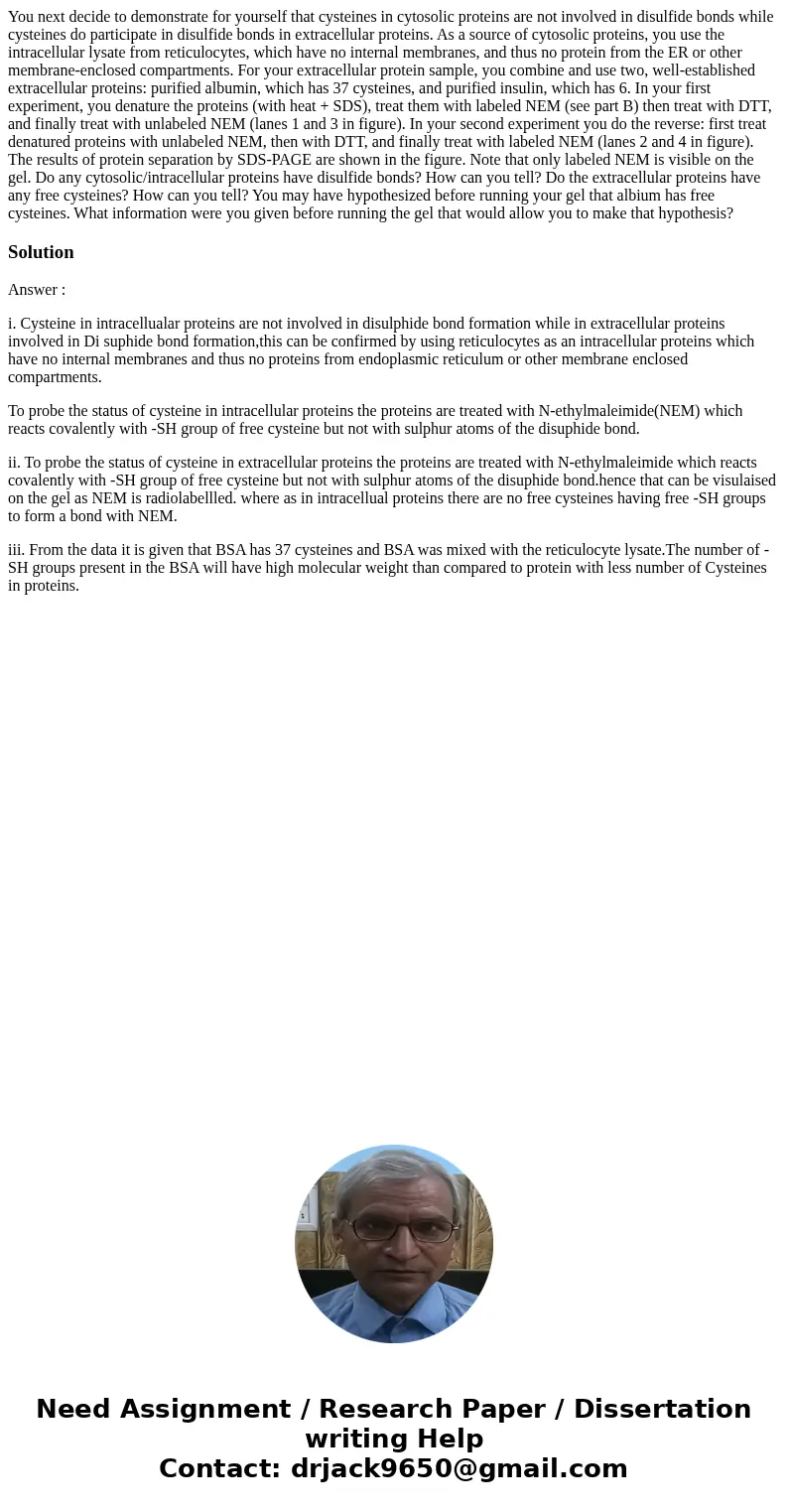You next decide to demonstrate for yourself that cysteines in cytosolic proteins are not involved in disulfide bonds while cysteines do participate in disulfide bonds in extracellular proteins. As a source of cytosolic proteins, you use the intracellular lysate from reticulocytes, which have no internal membranes, and thus no protein from the ER or other membrane-enclosed compartments. For your extracellular protein sample, you combine and use two, well-established extracellular proteins: purified albumin, which has 37 cysteines, and purified insulin, which has 6. In your first experiment, you denature the proteins (with heat + SDS), treat them with labeled NEM (see part B) then treat with DTT, and finally treat with unlabeled NEM (lanes 1 and 3 in figure). In your second experiment you do the reverse: first treat denatured proteins with unlabeled NEM, then with DTT, and finally treat with labeled NEM (lanes 2 and 4 in figure). The results of protein separation by SDS-PAGE are shown in the figure. Note that only labeled NEM is visible on the gel. Do any cytosolic/intracellular proteins have disulfide bonds? How can you tell? Do the extracellular proteins have any free cysteines? How can you tell? You may have hypothesized before running your gel that albium has free cysteines. What information were you given before running the gel that would allow you to make that hypothesis?
Answer :
i. Cysteine in intracellualar proteins are not involved in disulphide bond formation while in extracellular proteins involved in Di suphide bond formation,this can be confirmed by using reticulocytes as an intracellular proteins which have no internal membranes and thus no proteins from endoplasmic reticulum or other membrane enclosed compartments.
To probe the status of cysteine in intracellular proteins the proteins are treated with N-ethylmaleimide(NEM) which reacts covalently with -SH group of free cysteine but not with sulphur atoms of the disuphide bond.
ii. To probe the status of cysteine in extracellular proteins the proteins are treated with N-ethylmaleimide which reacts covalently with -SH group of free cysteine but not with sulphur atoms of the disuphide bond.hence that can be visulaised on the gel as NEM is radiolabellled. where as in intracellual proteins there are no free cysteines having free -SH groups to form a bond with NEM.
iii. From the data it is given that BSA has 37 cysteines and BSA was mixed with the reticulocyte lysate.The number of -SH groups present in the BSA will have high molecular weight than compared to protein with less number of Cysteines in proteins.

 Homework Sourse
Homework Sourse